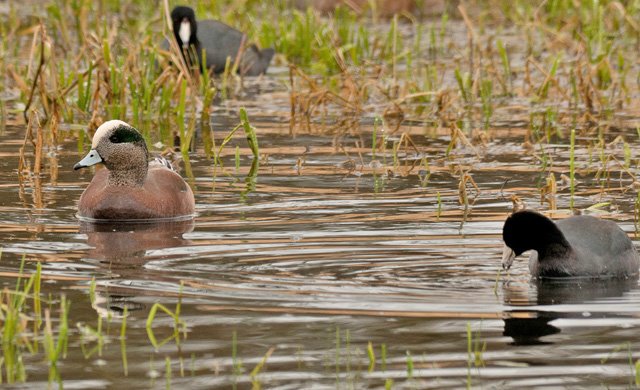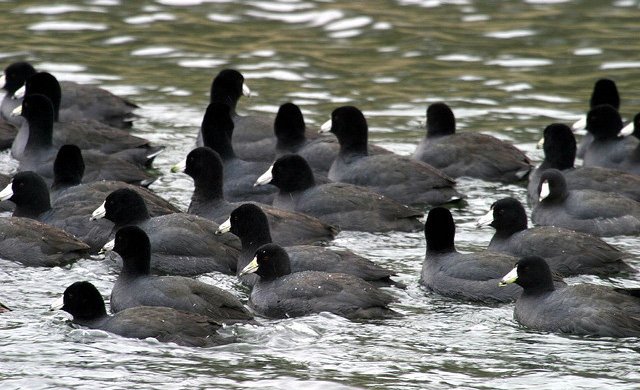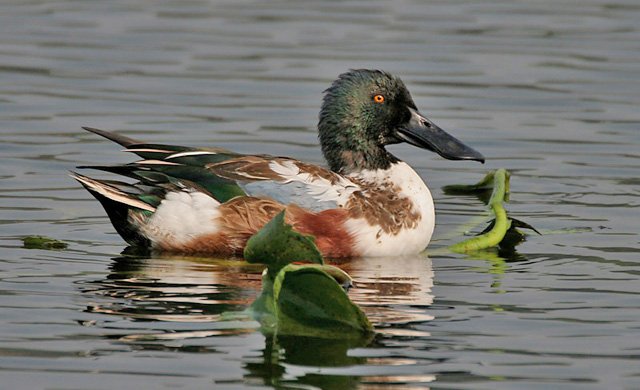
As it turned out the month of October brings some of the common migratory waterfowl to our local water treatment plant ponds in Indian River County, Florida. Coots, Blue and Green-winged Teals are staple at the ponds throughout the winter time. Other ducks such as American Wigeons, Northern Pintails, and Northern Shovelers are as common at the ponds as the frequency and duration of each cold front.
Visiting the local water treatment plant after a cold front has become a habit for some of the county birders. We never know what is in store for us there. The ponds are good birding spots throughout the year, but during the winter time are rather exciting. Rafts of coots move about the shallow ponds alongside swimming flocks of Blue-winged Teals, fewer Green-winged Teals and pairs of Hooded Mergansers. Scanning through the mostly common birds, hopping to be the first to spot the unusual or rare bird is birding at its best.

Flock of coots. Photo by Bruce Tuten
What I just called “birding at its best” becomes even more exciting after every cold front through the Central part of the State of Florida. Invariably, each cold front brings along American Wigeons, Northern Shovelers, lots of Scaups, Ring-billed ducks and other surprises. Birding through the expected wintering waterfowl at ponds with an obvious influx of new arrivals makes things more exciting.
Interestingly though the new arrivals do not stick around the ponds for very long. The cold air stays in the area for two or three days and soon gives way to the warm Florida air. As temperatures begin to resume, these new arrivals begin to vanish. Although few stay, most of the ducks apparently pushed by the front leave the ponds. Some think the ducks move further south in search of better habitat. Others think they fly back north to other southern states where quality of wetlands is better. Others think that every cold front brings a set of new individuals to central Florida, which scatter through the state for the winter.

Northern Shoveler. Photo by J. M. Garg.
My favorite thought is that most of the new ducks pushed to our local pond every cold front fly back north, not all the way to wintering grounds because it is way too cold, but just north to the northern portion of Florida or neighboring southern states. Then they are temporarily forced down south as even the sites in the southern states get too cool for the few days a cold front lasts. We would need to band, or better set up a radio transmitter to see what these birds do. In the meantime though, birding lunch breaks from work at the local ponds are as exciting as the low temperatures predicted by the weather forecast for the upcoming cold fronts.
Featured Photo by Tony Grover.













Leave a Comment